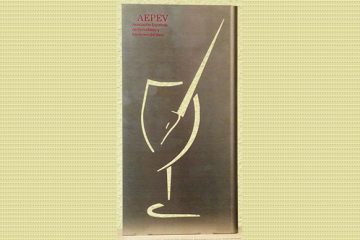Wine glasses are a whole category to themselves, and can appear quite complicated from the outside. There are a whole host of different shapes and sizes, and the basic idea is that each type of glass will best express a given type of wine.
Among the most distinctive-looking wine glasses are Champagne flutes: Tall and with a narrow bowl, they stand out a mile away and instantly call to mind lavish parties, celebrations and good times. Have you ever stopped to think about why Champagne flutes are shaped in this way, why they look the way that they do? It’s not the sort of question that should keep you up at night, but it’s a useful thing to know for the next time you’re making small-talk at a cocktail party!
What are Champagne flutes for?
Champagne is a sparkling wine, just like Cava, Prosecco, Crémant and Franciacorta, to name just a few. Sparkling wine differs from still wine in numerous ways, though the most apparent is that it has bubbles and still wine does not. Obvious, right? As a result, sparkling wine behaves differently. The best Champagne is served chilled and fresh, its lively mousse (a fancy name for the bubbles) caressing your tongue with tingling acidity. This is why Champagne is best served straight from the bottle and enjoyed immediately. If you were to treat a Champagne in the same way as a Gran Reserva Rioja or fine Bordeaux – letting it breath, and so on – you would find that before too long the wine would lose a lot of its effervescence and end up tasting flat and unappealing.
Champagne flutes are designed to keep your Champagne or Cava as fresh and lively for as long as possible once it has been poured. A quality Champagne flute, such as Riedel Vinum Cuvée Prestige, has the ability to preserve the bubbles while at the same time highlighting all the complexity and nuance that you would expect from a great Champagne.
How do Champagne flutes work?
Champagne flutes keep the carbonation for longer because their narrow-bowl design keeps the wine’s contact with oxygen to a minimum. Other wine glasses, such as a Bordeaux wine glass, have wider bowls and thus a larger surface area for the wine to meet the oxygen. This is desirable in some wines, particularly full-bodied reds, though clearly not for Champagne and other sparkling wines. The tall design also has a distinct visual advantage, in that it allows you to really appreciate the beauty of the Champagne’s appearance.
What should you drink from Champagne flutes?
So let’s assume that you’ve got your hands on a couple of nice Champagne flutes. Great, now the fun begins, and you can put them to good use. What should you drink from your new Champagne flutes?
- Well, for a start, Champagne. A good non-vintage Champagne is usually a good better to offer quality at a fair price, and you can be sure that your new Champagne flutes will really accentuate that quality! Some of our favourites are Pierre Paillard Brut, Baron-Fuenté Grand Réserve and Perrier-Jouët Grand Brut.
- Cava, too. Just because the French got there first with the naming rights, it doesn’t mean that your Champagne flutes can’t double as Cava flutes. Llopart Original 1887 2008 is a vintage Cava in the brut nature style that barely costs as much as an entry-level Champagne.
- Some beers, including most fruit beers and Belgian lambic beer.
- Anything you want, really! Logic would say that you probably shouldn’t drink a big red wine from your Champagne flutes, but there’s nothing to stop you if that’s what makes you happy!
[cta_generico id=2597]


